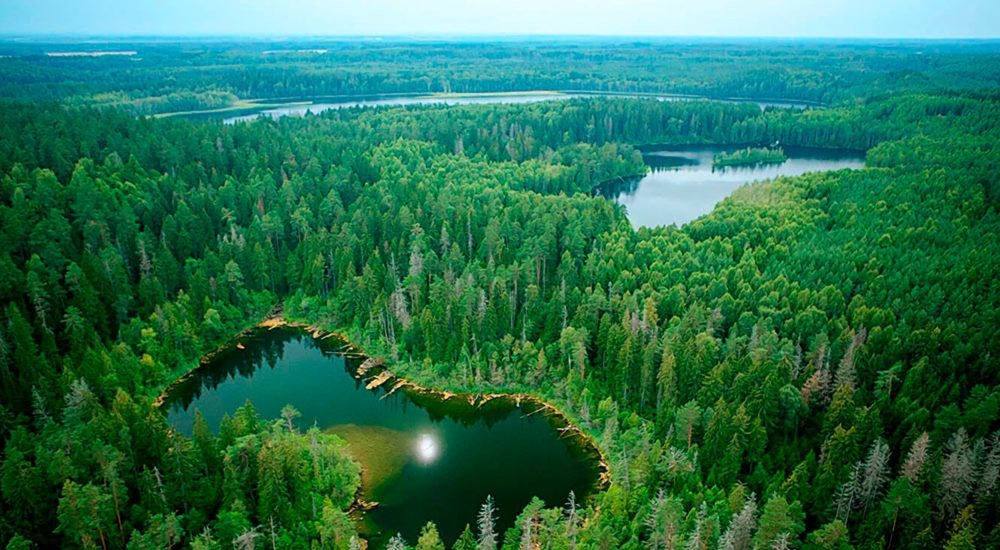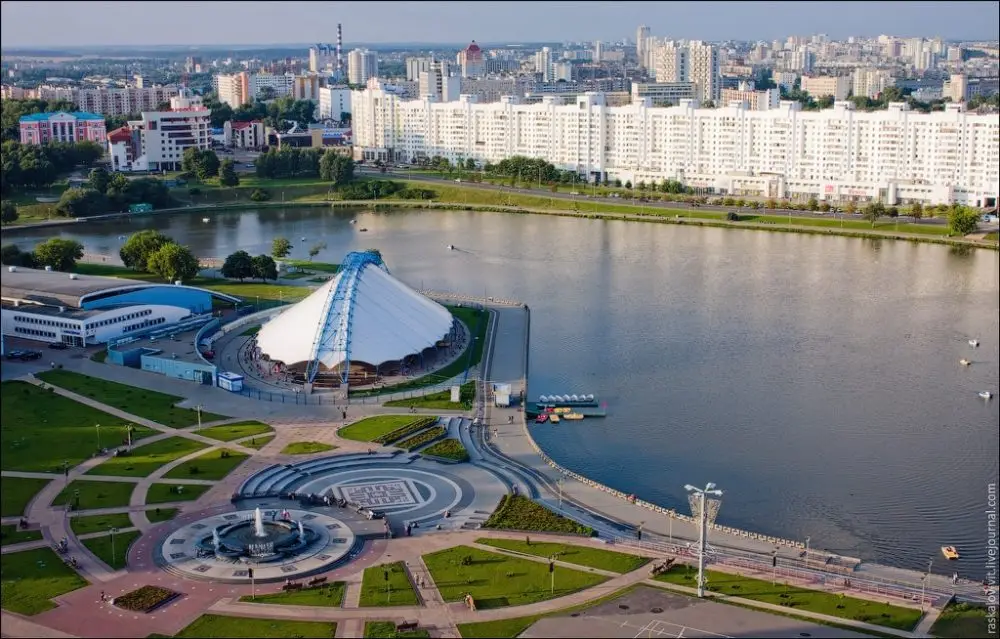The forest occupies a special place among the natural areas of Europe. The oldest forest area, preserved since ancient times, demonstrates a rare example of an intact ecosystem. The peculiarities of Belovezhskaya Pushcha lie not only in its rich biodiversity, but also in its historical significance: the area has long been recognised as a UNESCO World Heritage Site. The forest massif spreads out at the junction of Belarus and Poland, covering an area of about 150 thousand hectares.
The features attract tourists with scenic routes, the opportunity to see legendary bison in the natural environment and unique flora, including more than a thousand plant species. The site serves not only as a tourist magnet, but also as a scientific platform for botanists and zoologists from all over the world.
Historical Aspect: Features of Belovezhskaya Pushcha through the Ages
The history of Belovezhskaya Pushcha goes back more than 600 years. The forest was used as a royal hunting residence, as evidenced by the preserved architectural buildings and documents. An important feature of Belovezhskaya Pushcha remains its rich cultural heritage, intertwined with the traditions of local residents and many legends about forest spirits and ancient rituals.
The location in Belarus fulfils the role of a historical archive of nature: remnants of forests that covered Europe several centuries ago are concentrated here. The area has witnessed many historical events, including important diplomatic meetings and the signing of international agreements.
Bison: symbol and pride of Belovezhskaya Pushcha
 One of the main symbols of the forest is the bison, the largest land mammal in Europe. The animals are of special value, as this is where the species was preserved after being threatened with extinction in the early 20th century. Today, the population numbers several hundred individuals, which makes the forest a unique area for observation. Special features of Belovezhskaya Pushcha include a well-developed infrastructure for seeing bison: special enclosures, observation platforms and observation towers allow tourists to safely see these giants from a distance of several metres.
One of the main symbols of the forest is the bison, the largest land mammal in Europe. The animals are of special value, as this is where the species was preserved after being threatened with extinction in the early 20th century. Today, the population numbers several hundred individuals, which makes the forest a unique area for observation. Special features of Belovezhskaya Pushcha include a well-developed infrastructure for seeing bison: special enclosures, observation platforms and observation towers allow tourists to safely see these giants from a distance of several metres.
Flora and fauna: the wealth of nature without borders
The flora and fauna of Belovezhskaya Pushcha are surprisingly diverse. More than 900 species of plants, including rare mosses, lichens and medicinal herbs, form a unique vegetation cover. Among the animals there are bears, lynxes, red deer, wild boars, as well as over 250 species of birds, which makes the location especially attractive for ornithologists. The peculiarities of Belovezhskaya Pushcha are expressed in the harmonious coexistence of many species in a closed ecosystem. Scientific data records the constant appearance of new species that have never been found in the region before, which testifies to the high dynamics of biodiversity.
Tourism and infrastructure: routes for all
Tourism in Belovezhskaya Pushcha is developing at an active pace. The routes are designed for both experienced travellers and beginners. Hiking trails, bicycle routes and ecological paths are equipped for the convenience of guests. Tourists can walk through the oldest parts of the forest, visit lookouts and even climb observation towers for a full view of the area. Special features of Belovezhskaya Pushcha include the possibility of year-round visits: in winter, sledging excursions are organised, and in summer, picnics and night photo safaris are popular.
Ecological significance and UNESCO status
Being recognised as a UNESCO World Heritage Site underlines its importance for the whole planet. The reserve plays a key role in preserving the natural balance, acting as a natural filter and genetic reservoir for a multitude of species. The uniqueness of the area also includes strict visitor rules aimed at minimising human impact on nature. Tourists are obliged to follow the routes, observe safety rules and keep the area clean.
Popular activities: how to spend time in the forest
Belovezhskaya Pushcha in Belarus offers a variety of leisure activities. Along with classic excursions, there are educational programmes for schoolchildren and students, master classes in ornithology and botany, thematic guided tours and even quests for families with children.
Top 10 activities in Belovezhskaya Pushcha
Pay attention to these activities:
- Visit to cages with bison and other animals. The central part of the route includes an area with spacious enclosures where bison, moose, roe deer and rare bird species live. Tourists can observe the animals in conditions as close to their natural environment as possible, learn details about their habits and their place in the ecosystem.
- Hiking along ancient trails. Hiking trails run through woodlands with centuries-old trees and ancient bogs. Groups walk along ecological trails, each of which is equipped with information boards with descriptions of rare plants and animals.
- Bicycle tours along scenic routes. Outdoor enthusiasts choose bicycle tours, which allow them to cover large distances in a single day. The paths pass through shady alleys, past lakes and meadows with rare species of flora.
- Excursion to the Museum of Nature. The museum tells about the history of the forest and shows collections of stuffed animals, herbariums of plants and unique artefacts. Of particular interest are the expositions devoted to saving bison from extinction and restoring populations of other species.
- Climbing the observation tower. The high observation towers provide a panoramic view of the surrounding area. From the height you can see dozens of kilometres of protected forest, which looks especially picturesque in the morning and evening hours.
- Winter sleigh rides. In winter, the forest is transformed into a fairytale forest, and horse-drawn sleigh rides become one of the most popular winter pastimes. The route runs along snow-covered trails, and campfires and hot meals are organised.
- Taking part in photo safaris. Photographers and naturalists choose special tours that are organised at dawn or dusk, when the animals are most active. Guides show secluded spots for photographing bison, deer and rare birds.
- Overview of historical buildings. Belovezhskaya Pushcha is famous not only for its nature but also for its architectural monuments. Tourists visit old hunting lodges, watchtowers and wooden chapels that tell about the history of the region.
- Bird watching with professional ornithologists. Ornithological tours offer the opportunity to get to know more than 250 species of birds. Participants learn to identify birds by their voices and plumage, as well as their migration routes.
- Training in forest safety and environmental responsibility. Lectures and practical ecology classes are organised for those interested in nature conservation. Programmes include basic orienteering, how to minimise impact on nature and how to behave in the wilderness.
Activities reveal the peculiarities of Belovezhskaya Pushcha as widely as possible, creating conditions for useful and varied leisure both for solo travellers and for family groups and organised tours.
Belovezhskaya Pushcha: features of the benchmark of natural beauty
 Belovezhskaya Pushcha continues to inspire explorers, tourists and conservationists around the world. The location not only demonstrates the richness of nature, but also serves as a model of harmonious coexistence between humans and wildlife. The peculiarities of Belovezhskaya Pushcha provide a unique experience for every visitor, revealing the secrets of nature at every step.
Belovezhskaya Pushcha continues to inspire explorers, tourists and conservationists around the world. The location not only demonstrates the richness of nature, but also serves as a model of harmonious coexistence between humans and wildlife. The peculiarities of Belovezhskaya Pushcha provide a unique experience for every visitor, revealing the secrets of nature at every step.
 en
en  ar
ar  de
de  es
es  fr
fr  nl
nl  ru
ru  hi
hi  it
it  pt
pt  el
el 



